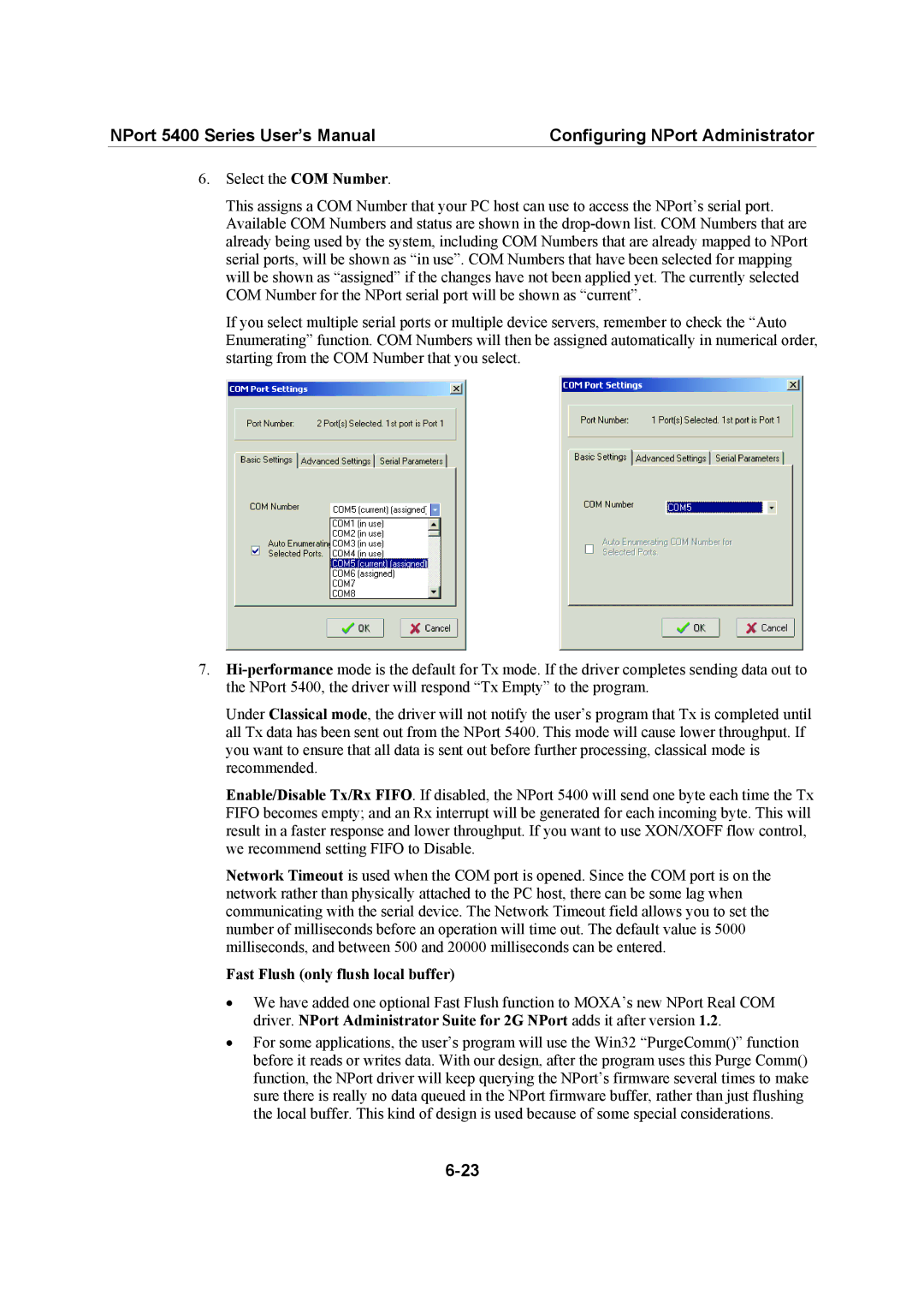
NPort 5400 Series User’s Manual | Configuring NPort Administrator |
6.Select the COM Number.
This assigns a COM Number that your PC host can use to access the NPort’s serial port. Available COM Numbers and status are shown in the
If you select multiple serial ports or multiple device servers, remember to check the “Auto Enumerating” function. COM Numbers will then be assigned automatically in numerical order, starting from the COM Number that you select.
7.
Under Classical mode, the driver will not notify the user’s program that Tx is completed until all Tx data has been sent out from the NPort 5400. This mode will cause lower throughput. If you want to ensure that all data is sent out before further processing, classical mode is recommended.
Enable/Disable Tx/Rx FIFO. If disabled, the NPort 5400 will send one byte each time the Tx FIFO becomes empty; and an Rx interrupt will be generated for each incoming byte. This will result in a faster response and lower throughput. If you want to use XON/XOFF flow control, we recommend setting FIFO to Disable.
Network Timeout is used when the COM port is opened. Since the COM port is on the network rather than physically attached to the PC host, there can be some lag when communicating with the serial device. The Network Timeout field allows you to set the number of milliseconds before an operation will time out. The default value is 5000 milliseconds, and between 500 and 20000 milliseconds can be entered.
Fast Flush (only flush local buffer)
•We have added one optional Fast Flush function to MOXA’s new NPort Real COM driver. NPort Administrator Suite for 2G NPort adds it after version 1.2.
•For some applications, the user’s program will use the Win32 “PurgeComm()” function before it reads or writes data. With our design, after the program uses this Purge Comm() function, the NPort driver will keep querying the NPort’s firmware several times to make sure there is really no data queued in the NPort firmware buffer, rather than just flushing the local buffer. This kind of design is used because of some special considerations.
